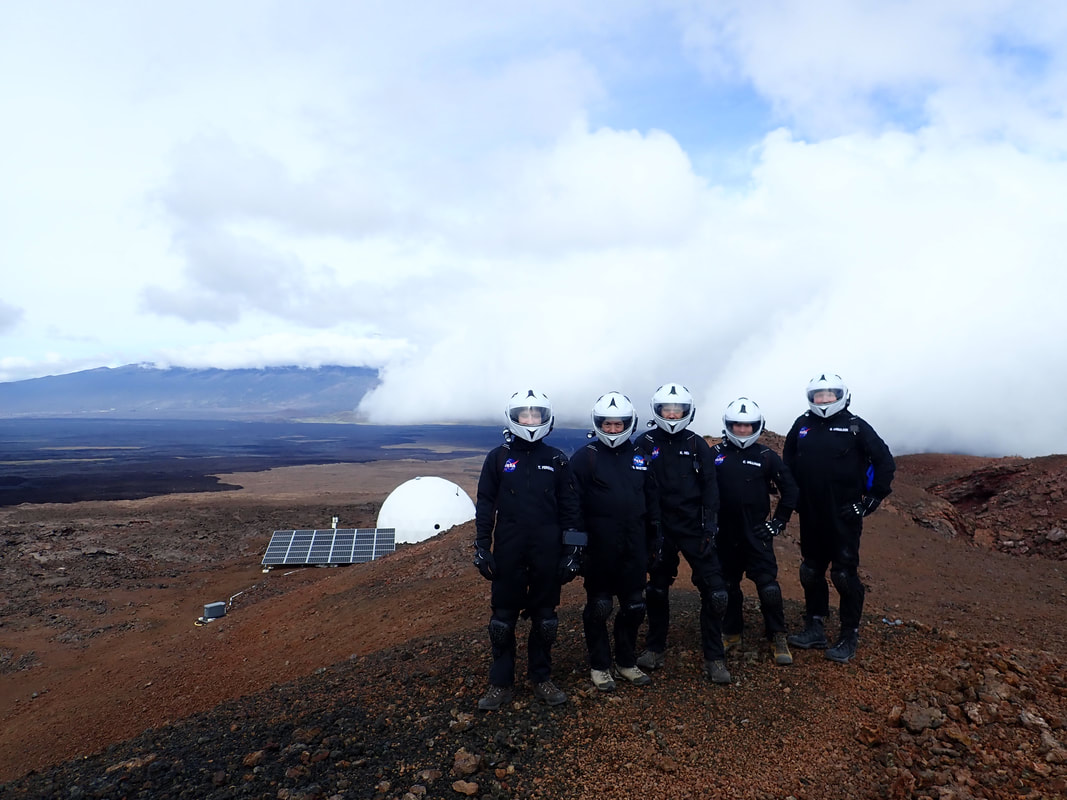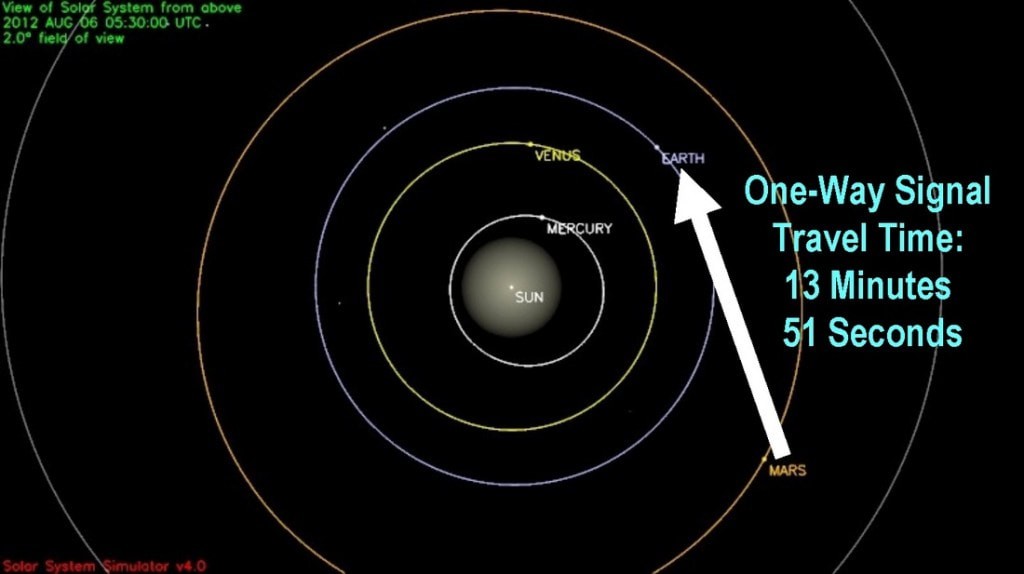|
Going to Mars will not be easy... Of these factors, one of the biggest ones our research team is facing in our HISEAS mission is the communication delay. Because of the distance, the communication window varies between 4 and 24 minutes depending on the Earths position relative to Mars within their respective orbits. How this impacts us specifically is our ability to upload data and transmit it back to "Earth", in this case the Theoretical and Applied Neuroscience Laboratory at the University of Victoria. In reality, what this means for the astronauts is that our brain performance monitoring technology will have to be entirely contained and the data will have to be analyzed in the habitat itself.
Think of it this way. Imagine an astronauts heart rate kept increasing and increasing - to the point of hitting a dangerous level and a cardiac event was imminent. Would you really want the astronaut to have to wait the maximum possible delay (48 minutes) to find out that they were in danger. This is the entire point of the technology that we are testing - the brain performance assessment can be done on site and in 5 minutes so whoever is using the technology knows immediately if they are cognitively fatigued or not.
0 Comments
Leave a Reply. |
AuthorDr. Olav Krigolson is the Associate Director for the Centre for Biomedical Research, an Associate Professor in Neuroscience, and the Principle Investigator of the Theoretical and Applied Neuroscience Laboratory at the University of Victoria. ArchivesCategories |


 RSS Feed
RSS Feed